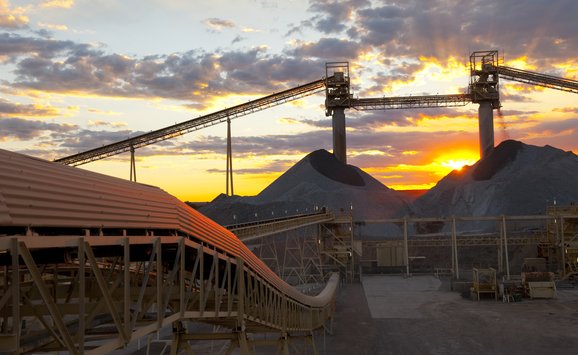In late July, California announced an agreement with four auto companies (Ford, Honda, BMW, and VW) to meet tighter standards than what the Trump administration is preparing to set for the industry. The Trump administration called this agreement a “PR stunt,” which we take to mean as an act that is all for show and lacking any substance. Although the media has paid some attention to this agreement, we’ve seen little discussion of the basic question: Was the agreement just a publicity stunt?
First, let’s stipulate that California’s Governor Newsom and his administration, including the California Air Resources Board, are firmly and demonstrably committed to reducing greenhouse gases. Further, Newsom and his administration strongly believe that California has the right to set standards more tightly than national standards—per the California waiver—and plan to take all the steps they can to defend that belief in court. Thus, there is no mere “show” here. But will the California agreement be effective?
To answer this question, let’s go back in time to the end of the Obama administration, when the EPA rushed to complete its review of the aggressive standards that had been set in 2012 to progressively tighten through 2025. The EPA endorsed the original standards, which left many auto companies complaining that these standards would be too costly to meet, because of low gasoline prices and shifts in consumer demand.
Soon after Trump’s election, every major auto company signed a letter to Trump asking him to reevaluate the Obama administration’s decision. The Trump administration—in an attempt to show its support for big business and disdain for all things Obama and climate related—made weakening those standards a major initiative. The administration proposed weakening the fuel economy/greenhouse gas requirements by about 25 percent, freezing the standards at their 2021 level, and ending California’s authority to set its own standards for emissions and electric/fuel cell vehicles. (Under the Clean Air Act, the EPA can grant California the right to set tighter standards than the national ones.) But the Trump standards seem to have gone further than the automakers wanted, as the automakers expect regulations to eventually return to stricter standards, and they worried about the regulatory uncertainty surrounding California’s inevitable litigation against the Trump administration’s updated standards. After seeing the new standards, nearly all the auto companies asked for a compromise between the Trump and Obama standards.
With compromise apparently off the table, California reached a deal with the four companies. The companies agreed to meet California’s plan for new standards, not only for sales in California and the states that implement California’s standards, but also nationwide. These standards strike a middle ground, mainly by delaying compliance with the Obama standards by a year and making other technical adjustments, such as crediting aerodynamic improvements, which will probably reduce the overall costs to the companies. And from California’s perspective, with the four companies representing almost a third of the entire new vehicle market, one-third of a loaf is better than none.
But will the deal reduce emissions? If the Trump administration proceeds with weakening the planned national standards, then the four companies would exceed those national standards. In the national program, firms can generate credits for over-complying with the standards that they can sell to other firms that under-comply. Any credits the four companies sell to other companies would undermine the agreement; if the companies sell all their over-compliance credits, the agreement would end up not affecting emissions. Effectively, anyone buying a low-emitting BMW, Ford, Honda, or VW vehicle would be paying for someone else to buy a high-emitting vehicle of another company. However, it seems that selling credits in this way would violate the spirit if not the letter of the agreement, and we’ll assume this probably won’t happen.
Beyond this concern, two provisions of the agreement deserve a closer look. First, according to the agreement, selling one plug-in vehicle counts as more than one vehicle when assessing credits and compliance. Second, emissions from electricity generation won’t be counted for compliance. As noted previously in an RFF report (2017), these provisions effectively increase emissions, and they could eliminate at least a quarter of the emissions reductions in the agreement. While these provisions don’t necessarily call for the “PR stunt” label, they nonetheless mean that the agreement may be less effective than a quick glance would indicate.
Perhaps other companies will join the agreement; perhaps not. Two economic issues will surely play a role in their decisions. For one thing, if a company doesn’t join the agreement, and California is able to set its own standards (along with the 13 other states that follow California’s lead), then the auto company will have to meet both the California and federal standards simultaneously. A company would have to sell low-emitting vehicles in California and the other 13 states, along with higher-emitting vehicles in the other states, and the company could affect the sales of different types of models using pricing strategies and dealer incentives. The fact that many companies have not joined the agreement suggests that they may not find this strategy of optimizing their product mixes so daunting.
A second economic issue is trade exposure: Some companies are much more sensitive to international trade policies than others. For instance, many of Toyota’s low-emitting vehicles are produced in Japan. A trade-exposed company that joins the agreement could face higher tariffs, making it harder to reduce its emissions.
In the end, the industry knows that a future president will return to or even exceed the Obama standards. With long lead times in bringing new vehicles to market, maybe it’s just good business to plan for tighter standards, irrespective of whether the other 70 percent of the industry joins the California agreement.







